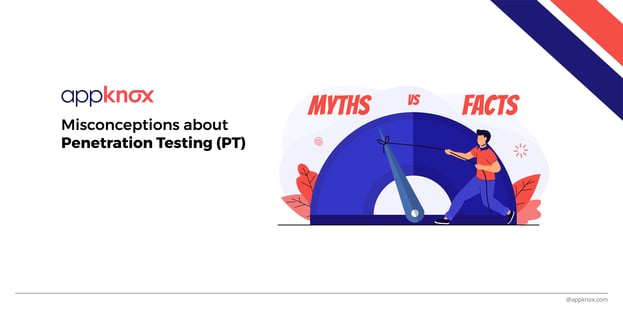
BLOG

BLOG
Penetration Testing has become indispensable to most companies' secure software development lifecycle. Unfortunately, because of widespread misconceptions, several businesses still don't understand the true potential of pen testing and refrain from using it to ensure mobile app security. However, this article will clear those myths and help you with a reality check on penetration testing for mobile applications.
People these days use mobile apps for everything from ordering groceries and medicines to paying loan EMIs and sending or receiving money. While it sounds convenient, users' private info, such as email, home address, bank details, etc., is always at risk of being stolen.
Therefore, it becomes the duty of app development companies to take up stringent measures to ensure complete security for their users. And that's when penetration testing comes into the picture.
App pen testing is a security exercise in which a pen tester tries to find & manipulate vulnerabilities in a system, or mobile app, in this case. The motive is to simulate the behavior of a potential hacker and discover & mitigate the weak spots in the application.
Here's an analogy for better understanding. Imagine that you have a bank, and send in a known person (employee) as a burglar whose job would be trying to enter the building and access the vaults. If the burglar succeeds, you, as a bank, would be able to find what went wrong and fix the same. And if the burglar fails to enter the vault, security is at its best.
In a nutshell, penetration testing for mobile applications is a method of detecting vulnerabilities and fixing them to prevent hackers from exploiting them.
Now that you know what app penetration testing is let's uncover some misconceptions about it.
Vulnerability assessment is an automated test for scanning a system or mobile application for known vulnerabilities requiring minimal human intervention.
On the other hand, a penetration test simulates a cyber attacker's behavior to discover any unknown vulnerabilities. It goes much more profound and is usually conducted with the assistance of an experienced and highly skilled engineer.
Both VA and PT are different terms with different meanings. While VA might sound like a cheaper & faster option — it's usually less effective without a pen test backing. So, make sure to always go for pen testing along with a vulnerability assessment to reduce the risk of cyber attacks to a minimum.
There's a big misconception that hackers target only large organizations. And hence only large organizations need PT and not small ones.
While it comes naturally that enterprise companies are a common target of cyber fraudsters, it's not entirely true. Enterprises and Fortune 500's are as much a target for hackers as SMEs.
According to a new (March 2022) report, small businesses are more frequent targets of cyberattacks.
Neither small nor big companies are immune from cyber-attacks or data breaches. Therefore, regardless of your organization's size, opting for a mobile app pen test is what you should do to discover and mitigate vulnerabilities in your mobile apps.
Yet another common disbelief around penetration is that anyone can perform penetration testing.
PT is a skill that comes with experience and lots of vigorous training. Also, penetration testing engineers hold expertise in using several tools such as:
Moreover, some pen testers even use social engineering skills to trick employees into telling the correct passwords or revealing sensitive data.
However, unfortunately, a common engineer lacks all of these abilities. And hiring a standard engineer will only render the penetration testing process useless.
Only trained professionals know how to use different penetration testing tools and perform various types of penetration testing. Therefore, always go for a trained professional or vendor.
The companies who understand the importance of PT are often scared of hiring a pen testing contractor because of two reasons:
However, that's not how the world operates. Performing background checks before choosing an outside vendor can help with the security part, and allowing the vendors to work with your team will automatically improve the effectiveness.
Hiring a reliable pen testing vendor can improve the effectiveness of penetration testing. It's because, unlike your in-house resource, they haven't touched your system and will be able to mimic the hacker's behavior correctly.
The expense of mobile application pen testing and web apps is excessively high and out of reach for the majority of small businesses.
If you have this misconception in mind, ask yourself what you can afford:
Obviously, the former, right?
So, spending a few thousand isn't going to hurt. However, based on the type of financial situation you have in your company, you can either train one of your IT engineers and purchase PT tools or hire a reliable vendor who offers penetration testing at affordable prices.
Penetration testing is hands down one of the best ways to find unknown loopholes and protect your mobile apps against hackers. So, include it in your SDLC and protect your customers' data and your company's reputation from staining.
Now that you have clarity about the common misconceptions check out our detailed guide on penetration testing to stay ahead of the mobile app security curve for your organization.
